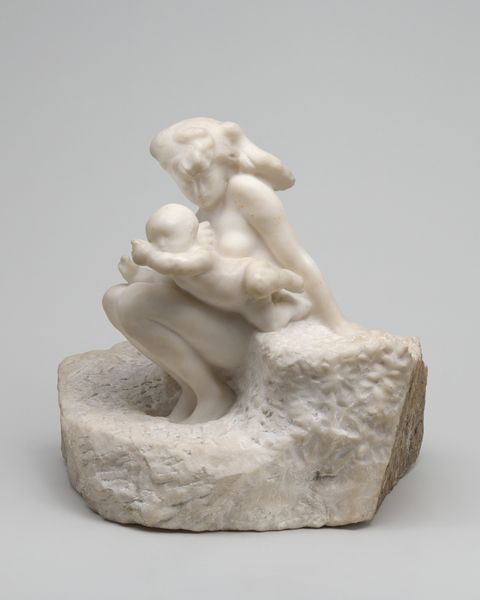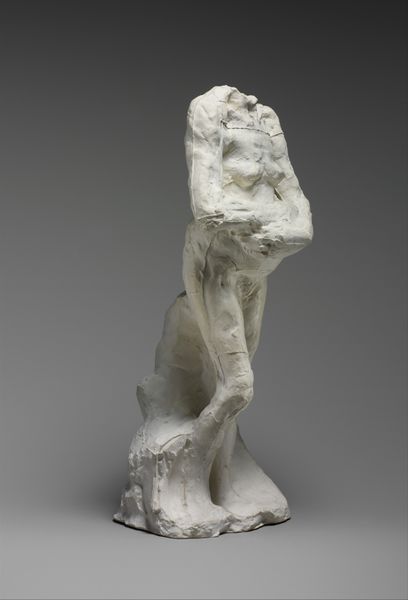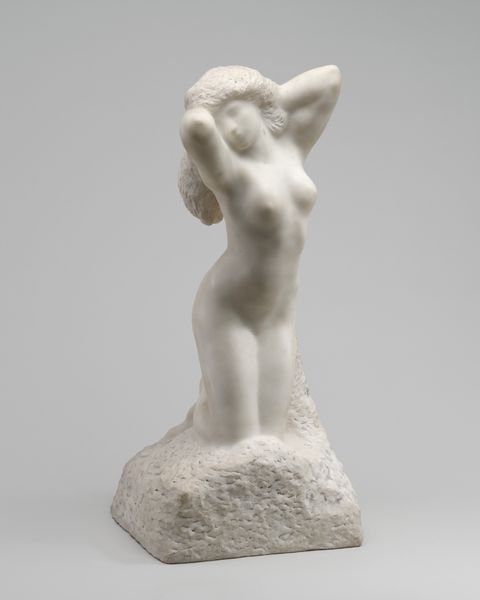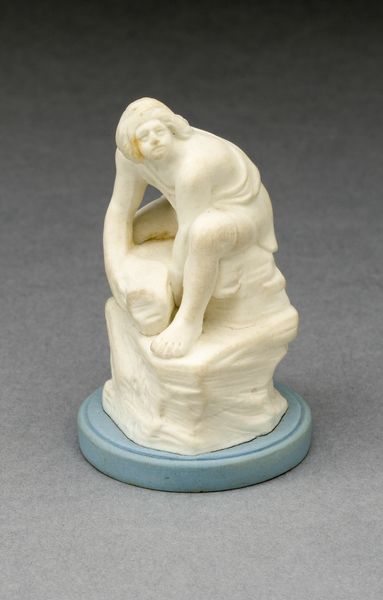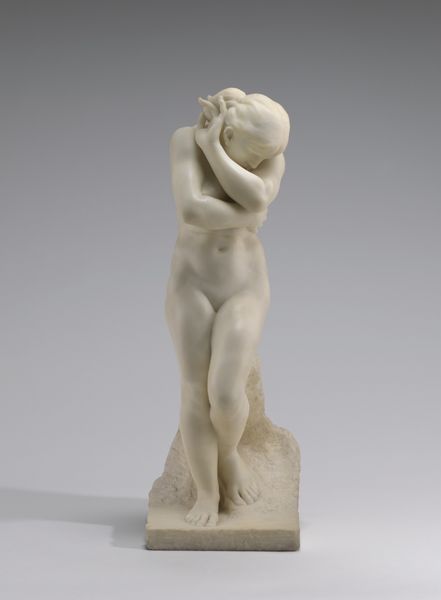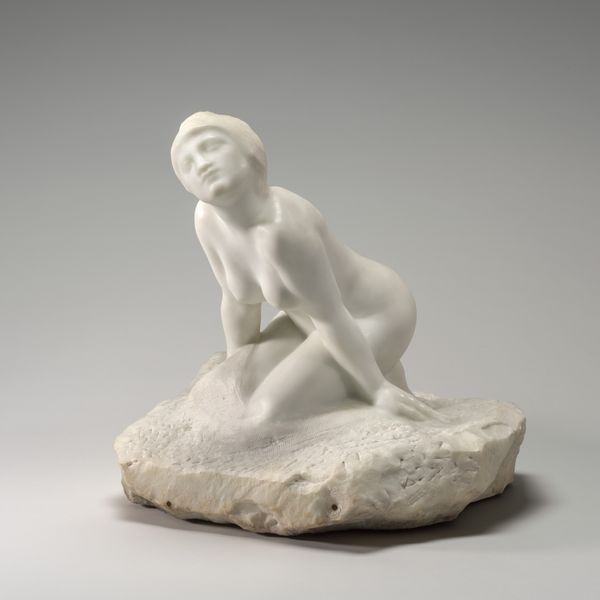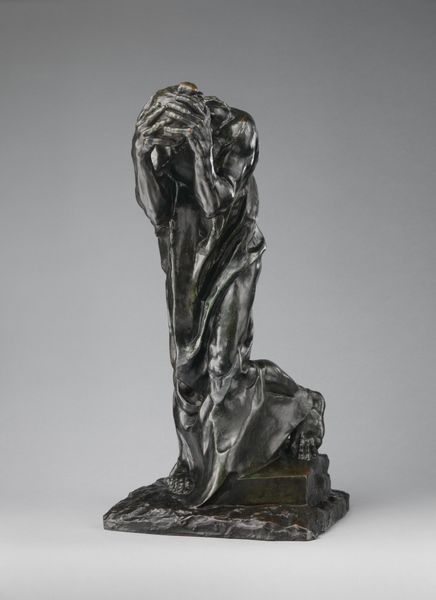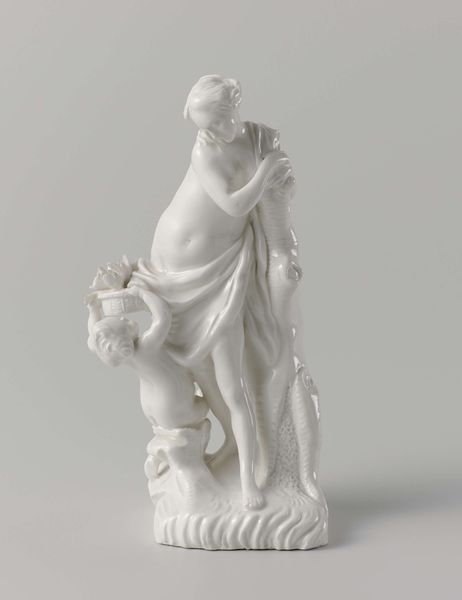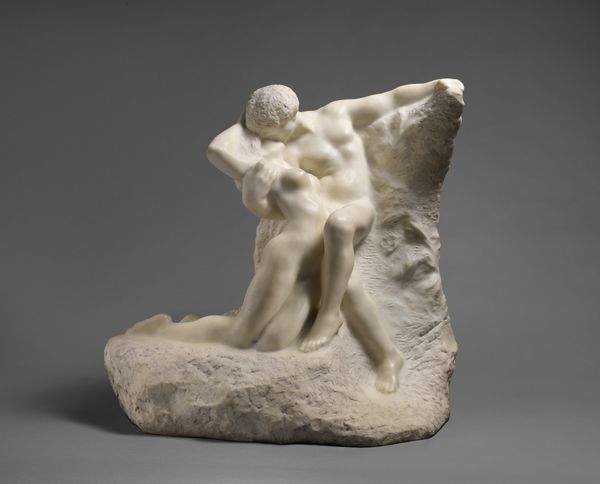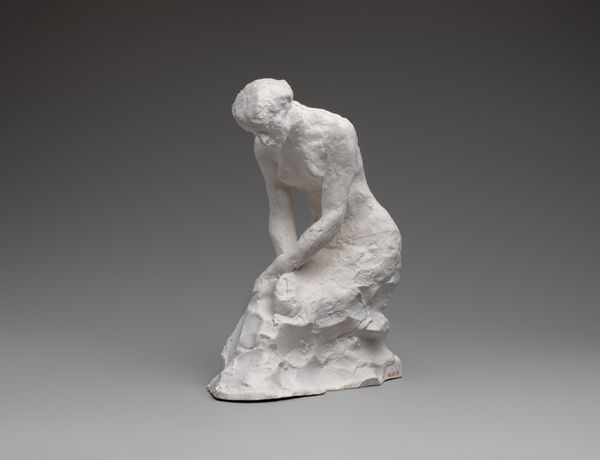
Dimensions: Overall (confirmed): 29 × 23 3/4 × 25 1/4 in., 508 lb. (73.7 × 60.3 × 64.1 cm, 230.4 kg)
Copyright: Public Domain
Auguste Rodin made this marble sculpture, called The Hand of God, in France at a time when religious belief was being questioned by new scientific ideas. The image speaks to this tension. We see a rough, unfinished block of stone, representing the raw material of the earth. From this form emerges a hand, understood as the hand of God, gently holding the first man and woman. Rodin here references religious creation myths, but in a way that emphasizes the physical process of creation. He may even be inviting us to see the artist as a kind of god, shaping human forms from inert matter. Rodin was working at a time when museums and art schools were becoming increasingly important. Art historians study the effect of these institutions, and we can read Rodin's work as a commentary on the artist's own role within the social order. To understand this, we need to look at the social and intellectual context in which it was made.
Comments
No comments
Be the first to comment and join the conversation on the ultimate creative platform.
